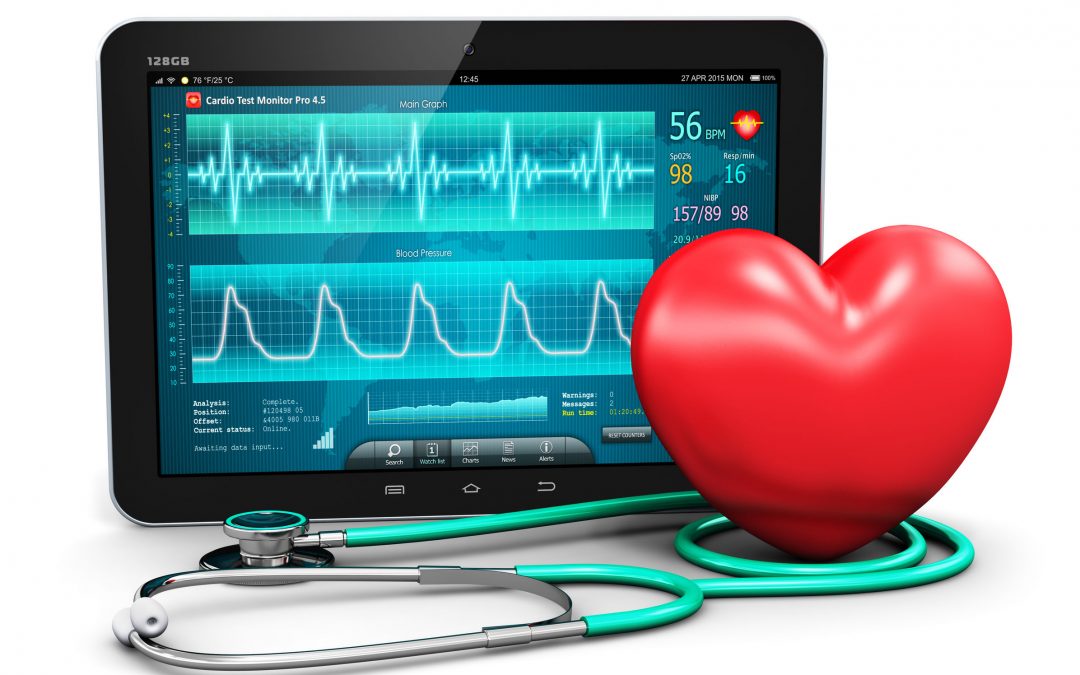
by targetmarket | Sep 29, 2023 | Bloodless Heart Surgery, Dr. Giovanni B Ciuffo
Heart surgery, also known as cardiac surgery, is a medical procedure that has saved countless lives by treating various heart conditions. Traditionally, heart surgery involves the use of blood transfusions to replace lost blood during the procedure. However, in recent years, there has been a growing interest in bloodless heart surgery, a technique that eliminates or significantly reduces the need for blood transfusions. Bloodless Heart Surgery While bloodless heart surgery offers numerous advantages, it’s essential to acknowledge patients need to be well-informed about the process and decide whether it is a good option for their individual needs. Here at Minimally Invasive and Bloodless Heart Surgery with Dr. Giovanni B. Ciuffo, we will explore everything you need to know about bloodless heart surgery, from its benefits to the techniques used. Why Bloodless Heart Surgery? Bloodless heart surgery care is an increasingly popular choice for all patients who need surgery in a growing number of medical institutions. It is interesting to note that more and more patients are becoming interested in bloodless heart surgery, regardless of their religious beliefs. It turns out that avoiding the transfusion of blood products has significant clinical benefits. Bloodless heart surgery has gained popularity due to several compelling reasons: Reduced Risk: Blood transfusions come with potential risks, including transfusion reactions, infections, and compatibility issues. Bloodless heart surgery eliminates these risks, making it a safer option for some patients. Keep The Immune System Strong: A downfall of blood transfusions is that they can weaken the immune system and cause it to be less reactive. A weak immune system will not be able to fight infections or cancer... 
by targetmarket | Sep 15, 2023 | Dr. Giovanni B Ciuffo, Minimally Invasive Heart Surgeons, Minimally Invasive Heart Surgery, Uncategorized
Cardiovascular disease remains a leading cause of mortality worldwide. In fact, The American Heart Association (AHA) reports that approximately 82.6 million people in the United States currently have one or more forms of cardiovascular disease (CVD). Due to the prevalence of cardiovascular disease, there are continuous advancements in cardiac surgery techniques. Among these innovations, minimally invasive cardiac surgery stands out as a game-changer, offering numerous benefits over traditional open-heart surgery. Minimally Invasive Cardiac Surgery Minimally invasive cardiac surgery is an innovative approach that involves smaller incisions and advanced technology, resulting in shorter recovery times and improved patient outcomes. Dr. Ciuffo is an expert in high-risk heart surgery cases. He can evaluate your case and handle risk factors with our minimally invasive techniques with excellent results. Continue reading to learn 8 benefits of minimally invasive cardiac surgery. 1. Smaller Incisions And Reduced Scarring One of the most apparent benefits of minimally invasive cardiac surgery is the significantly smaller incisions made during the procedure. Compared to the large incision required for open-heart surgery, minimally invasive techniques use small keyhole incisions. As a result, patients experience less scarring, which not only has cosmetic benefits but also contributes to faster healing. 2. Quicker Recovery Time A shorter recovery time is a pivotal advantage of minimally invasive cardiac surgery. Patients typically spend less time in the hospital after the procedure and can return to their daily activities sooner. This reduced recovery period can lead to a higher quality of life and less disruption to the patient’s routine. 3. Reduced Pain and Discomfort Minimally invasive procedures are associated with less postoperative pain and discomfort.... by DrCiuffo | Dec 30, 2022 | Advanced Heart Surgery, Aortic Valve Replacement, Blog, Dr. Giovanni B Ciuffo, Heart Health
A normal functioning aortic valve has three leaflets, usually referred to as cusps, and is positioned at the end of the left ventricle. This valve is the main pump that delivers oxygenated blood to the entire body. An aortic valve replacement is required if someone suffers from Aortic Valve Stenosis or Aortic Valve Insufficiency. These two issues can cause a significant number of problems and can be life-threatening. Understanding the components that are involved in an aortic valve replacement is essential, especially if you are considering one. Dr. Ciuffo takes the time to consider your specific situation before moving forward on a treatment plan. If you are looking for this information to guide you through decisions regarding your healthy heart, this is a great place to start. Today we take a deep dive into aortic valve replacement, so you can have the knowledge you need. When to Consider Aortic Valve Replacement As already mentioned, there are two reasons why someone would need an aortic valve replacement. When suffering from aortic stenosis, the valve is narrow, causing it to be more challenging for the blood to go through. Basically, the muscle in the heart begins to thicken, causing a hissing sound, which is oftentimes confused with a murmur. With aortic valve insufficiency, the valve tends to “leak” when it is closed. This makes the heart work twice as hard to make the blood flow correctly and in the right direction. To repair this, doctors have created a minimally invasive technique that is much safer and easier on patients. What to Consider for an Aortic Valve Replacement Since the breastbone is... by DrCiuffo | Nov 15, 2022 | Blog, Bloodless Heart Surgery, Dr. Giovanni B Ciuffo, Heart Health, Heart Surgery
10 Tips For Inoperable Heart Disease A diagnosis of inoperable heart disease can be discouraging. A heart condition may be difficult to live with. Minimally invasive bloodless heart surgery may offer options that may not be possible with traditional methods. The treatment options available depend upon several conditions, including your physical health and the scope of experience of the doctors dealing with your case. Dr. Ciuffo is dedicated to finding the solutions that work best for everyone’s individual health journey. By helping you understand inoperable heart disease, you can move forward toward helpful changes. The first step is understanding that your journey will look different from other patients. Get started today to see how we can help you! Inoperable Heart Disease Each patient’s case is decided individually. There are steps you’ll need to take when facing a diagnosis of inoperable heart disease. It’s important not to panic or lose hope. Even if your case isn’t a good candidate for surgical options, many treatments can extend and improve the quality of your life. Ask questions. Request that the medical doctor in charge of your case and your surgeon explain exactly why your case is considered “inoperable.” Be sure to write down the details of their answers. Obtain copies of all of your diagnostic records, including imaging- CAT scans, catheterizations, echocardiograms, EKGs, and other reports. Gather copies of all the reports pertinent to your case, including blood tests and other results. Each of these steps can help you get more information about what is happening. Sometimes answers are more helpful than having to live wondering what will happen next. You should... 
by DrCiuffo | Jun 30, 2022 | Blog, Dr. Giovanni B Ciuffo, Heart Health
What is a Heart Murmur And What Are The Signs? A heart murmur is an unusual sound in the heartbeat’s cycle that’s caused by blood moving improperly through the valve system of the heart. The normal “lub-dub” sound that can be heard through a stethoscope is the sound of the heart valves opening and closing as they guide the blood through the heart during normal circulation. A murmur occurs when the valves aren’t doing their jobs properly and blood is flowing backward through the heart instead of following the normal pathways. Symptoms A heart murmur can cause poor circulation, which may result in cold or bluish extremities, especially the fingertips, toes, and lips. A victim may also experience swelling and weight gain, heavy sweating with minimal exertion, dizziness, and fainting, chest pain, chronic cough, or shortness of breath. In young children and infants, symptoms may also include a poor appetite and a failure to grow normally. Any of these symptoms should be a sign that it’s time to talk to your doctor about the underlying causes of your symptoms. It is important to not put off the trip to the doctor when it involves the heart. The doctor can then take into account the types of heart murmur it is before giving you the next step in the course of action. From there, you can have a better idea of what to consider about your heart’s health moving forward. Types of Heart Murmurs Johns Hopkins Medicine defines the three types of heart murmurs as “systolic”, “diastolic”, and “continuous.” A systolic murmur occurs during a heart muscle contraction. They are... by DrCiuffo | Jun 15, 2022 | Blog, Dr. Giovanni B Ciuffo, Recovery
What is Thoracic Surgery Recovery Like? What is thoracic surgery? Any surgery performed with an incision that enters through the chest is considered thoracic surgery, including open-heart surgery. Recovering from thoracic surgery is a long process. The recovery process will depend upon the exact type of surgery you have, the placement and size of the incision, the condition of the individual patient, and the care taken post-surgery. After all of these are considered, the doctors and healthcare professionals can provide the optimal recovery plan for your situation. To understand what it will look like, it is also essential to comprehend thoracic surgery itself. By learning more about thoracic surgery, you can see why the recovery process is such a long process. At the Minimally Invasive and Bloodless Heart Surgery Program, we provide you with the information that makes processes like this less intimidating from the start. There is less worry and more time to focus on reaching your important health goals. What is Thoracic Surgery? According to the Cancer Treatment Centers of America, thoracic surgery often referred to as open-heart surgery, may address a problem with the heart, esophagus, lungs, trachea, aorta, or diaphragm. Open heart surgery poses a significant challenge when it comes to healing. It’s going to take time to get back to feeling your best. It’s common to feel very tired and run down for six to eight weeks following the surgery. Your chest may feel swollen and sore for up to six weeks following the surgery. Most patients with traditional open-heart surgery go home with staples or stitches holding the incision closed while it heals....



